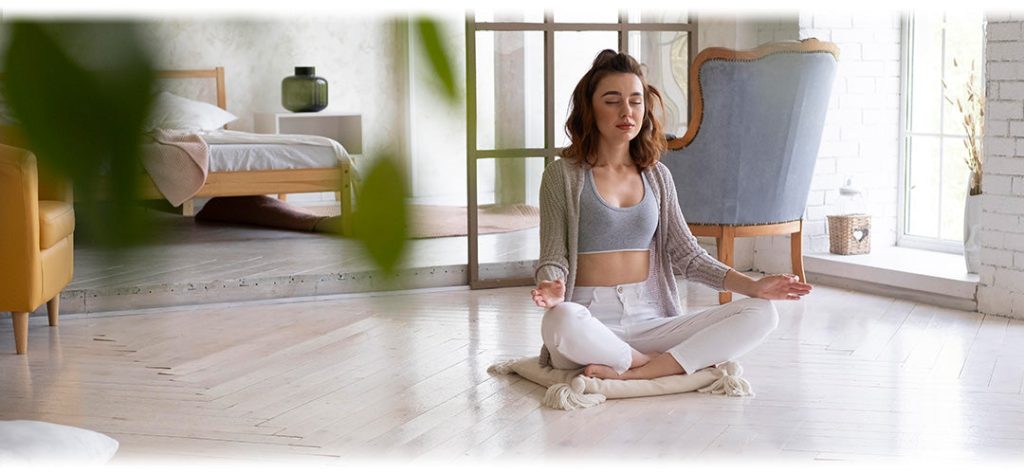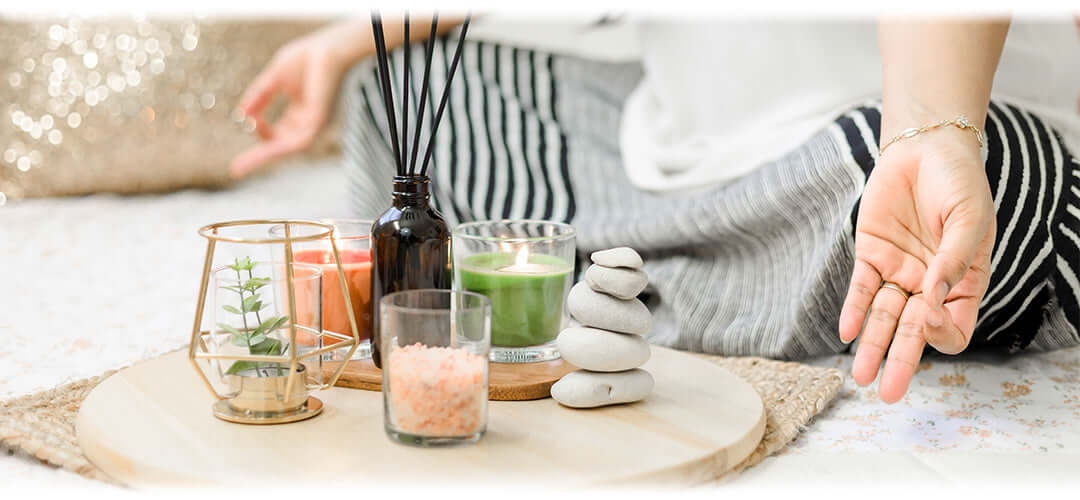If you’re looking to achieve greater focus, de-stress, and balance your mood and emotions better, meditation is an excellent place to start.
Many people think this ancient tradition, which has been practised all over the world for centuries, is the key to finding inner peace, calm and happiness.
Although meditation is closely linked to several religions, it’s more spiritual and practical in practice. In fact, it’s less about faith and more about enhancing your consciousness and awareness to create perfect harmony in your life. With the stresses and strains of modern life more demanding than ever, more people are turning to meditation to reset and rejuvenate their bodies, minds and thoughts.
There are many ways to meditate and several associated practices, such as yoga or mindfulness, that you can use to create inner calm. Creating the right environment to meditate is essential, as you need a comfortable, welcoming, quiet and relaxing space to switch off and focus your thoughts without distraction. So, if you’re serious about starting meditation, or have been doing it for a while but want to level up your Zen game, here are our top tips for creating the perfect home meditation space…

What is Meditation?
Meditation is a set of techniques designed to encourage a state of heightened awareness and focused attention in the person practising it. It’s a consciousness-altering practice that can have several emotional, mental and spiritual health benefits.
Cultures around the world have practised it for thousands of years, and nearly every major religion, from Christianity and Judaism to Islam and Buddhism, is based on meditative teachings and practices.
However, meditation is often used by people who don’t have any specific religious or spiritual beliefs as a way to calm their mind and achieve better emotional balance. While there are many forms of meditation, they can usually be focused into two main categories, concentrative meditation and mindful meditation.
Concentrative meditation involves placing all your focus and attention on a specific object or thing while tuning out everything else. The aim is to achieve a heightened sense of awareness about whatever it is you’re focusing on – whether that’s your breathing, a specific word or phrase, or a physical object – to reach a higher state of being.
On the other hand, mindful meditation is used to target different issues, including mood, depression, or mental health. It involves making yourself more open, aware and accepting of the world around you and where you exist in it. People often use mindfulness to meditate on a specific issue that’s bothering them, such as a work situation or financial worry. In contrast, others focus on a general theme, such as nature, to help them feel at one with their surroundings. Mindful meditation is all about paying attention to your thoughts as they pass through your mind and, rather than judging or acting on them, simply observing them and taking note of any patterns.
Benefits of Meditation
Regular meditation can bring several benefits, from improving your mental and emotional wellbeing to supporting your physical health. When you meditate, it helps to clear your mind of the information overload that builds up over time and contributes to your stress levels.
Meditating can help you gain a new perspective on stressful situations and develop better coping skills to manage stress. By increasing self-awareness and focusing on the present, it can help reduce negative emotions. It may also help unlock your imagination and creativity and increase your patience, tolerance and acceptance of people, places and things that you would usually find stressful, baffling or frustrating.
In terms of your physical health, meditation can help to lower blood pressure, reduce anxiety, ease pain, relieve low mood or depression, and improve sleep. All of these will place less strain on your vital organs and support your key body systems to keep them functioning as they should.
How to create the perfect Meditation space
You don’t always need a specific location to meditate. Anywhere that offers a bit of peace and quiet, away from any interruptions, is an excellent place to sit, open your mind and make a start. However, many people find they get the best results when meditating in a familiar, safe, and comfortable place. For most people, that’s home. So, if you’re looking to create the perfect meditation space at home, here are a few things to consider:
Choose a calm space
To relax and switch your mind off, many people need a space that’s calm and quiet. So, pick a room in your home where you can just sit, undisturbed, to allow your mind to wander. If there’s too much background noise, or people walking in and out, you may find it tricky to block it out and lose focus. So, choose a space that you feel safe in, that’s warm and comfortable, so you have the best chance of relaxing and focusing your thoughts.
Keep it uncluttered
Having too much clutter around can distract your eyes and mind and make it difficult to zone into your thoughts. So, keep your space as clutter and distraction-free as possible. That means no TV or computer screens and no electronic devices, although inspirational books and calming music can be a good way of allowing the mind to focus.
Make it comfortable
When attempting to meditate, making yourself as comfortable as possible is essential. If you’re constantly shifting position, fidgeting or can’t get comfy, it will distract your mind, and you’ll find it more challenging to focus your thoughts properly.
Choose soothing colours and lighting
Meditation is similar to sleep – if you create the right conditions, you’ll find it much easier to relax and get to the right headspace. So, pay close attention to the colours and lighting you choose for your meditation space. Calming, natural shades are better than bright and brash colours or bold patterns. And natural or soft lighting is better than fluorescent, bright or flashing lights. A dimmer switch or your favourite scented aromatherapy candle can help set the right mood.
Choose your favourite aroma
When you meditate, all your senses are heightened, including your sense of smell. So, introduce your favourite essential oils to create a calm and relaxing environment. With its fresh, sweet fragrance, Bergamot organic essential oil is relaxing, uplifting, mood-enhancing, good for building confidence and calming negative emotions. It also promotes healthy, clear skin. Clary Sage organic essential oil, meanwhile, has a very fresh, warm, and sweet aroma that is relaxing, warming and euphoric, with calming properties. It’s excellent for clearing the mind and enhancing mental clarity. And Patchouli organic essential oil has a rich, warming, spicy aroma that creates calm and peace. Its rich, musky fragrance has sensuous, aphrodisiac properties, while its earthy tones balance the emotions.






